Famous Veteran T-Shirt Campaigns: 3 Movements That Changed America (2016-2025)
Explore three famous veteran T-shirt campaigns from 2016–2025. Discover how these movements inspired patriotism, unity, and support for veterans across America.

Blog Post Contents
You've seen them at grocery stores, coffee shops, and gym parking lots. Veterans wearing the same black t-shirt with a bold "22" graphic. Strangers in matching "Honor The Contract" gear nodding at each other in silent recognition. These aren't just shirts. They're uniforms for movements that raised millions, changed laws, and saved lives.
Famous veteran t-shirt campaigns like 22 Kill, Honor The Contract, and Combat Flip Flops transformed simple cotton garments into tools for national change. Together, these three campaigns reached over 10 million Americans, raised $3+ million for veteran causes, and created 350+ jobs in conflict zones. More importantly, they proved that successful veteran apparel brands don't just sell shirts—they solve problems.
This article breaks down what made these campaigns work, what they achieved, and how they created a blueprint for veteran advocacy through apparel. No fluff. Just the strategies, numbers, and stories behind three movements that started with t-shirts and ended up changing America.
What Makes a Veteran T-Shirt Campaign "Famous"?
Not every shirt with an American flag becomes a movement. The difference between a fundraiser that sells 200 shirts and a campaign that reaches millions comes down to four measurable elements.
Cultural penetration means recognition beyond military circles. When your mom's hairdresser asks about your shirt, that's penetration. When late-night TV hosts reference your campaign, that's fame. The truly famous veteran t-shirts campaigns break out of the veteran echo chamber and enter mainstream conversation.
Measurable impact separates real campaigns from feel-good merchandise. Did hotline calls increase? Did laws change? Did jobs get created? Successful veteran apparel brands track concrete metrics: funds raised, veterans helped, awareness measured through search volume and media mentions. Vague claims about "raising awareness" don't cut it anymore.
Longevity matters because one-time viral moments fade fast. The campaigns that become famous maintain relevance years after launch. They create annual traditions, spawn similar movements, or build sustainable business models. A flash-in-the-pan viral moment isn't the same as a lasting brand.
Authenticity is non-negotiable. Every major successful veteran apparel brand was founded and led by actual veterans with direct combat or service experience. Civilians can support, design, and market—but the face of the movement must be someone who wore the uniform and earned the credibility.
Walk into any VFW hall, and you'll see the difference immediately. One wall has forgotten fundraiser posters from 2012. Another wall displays 22 Kill shirts from 2016, still relevant today. That's the gap between a campaign and a movement.
The Anatomy of Successful Veteran Apparel Brands
Four elements separate sustainable brands from temporary campaigns: mission clarity, veteran authenticity, transparent impact reporting, and intentional community building.
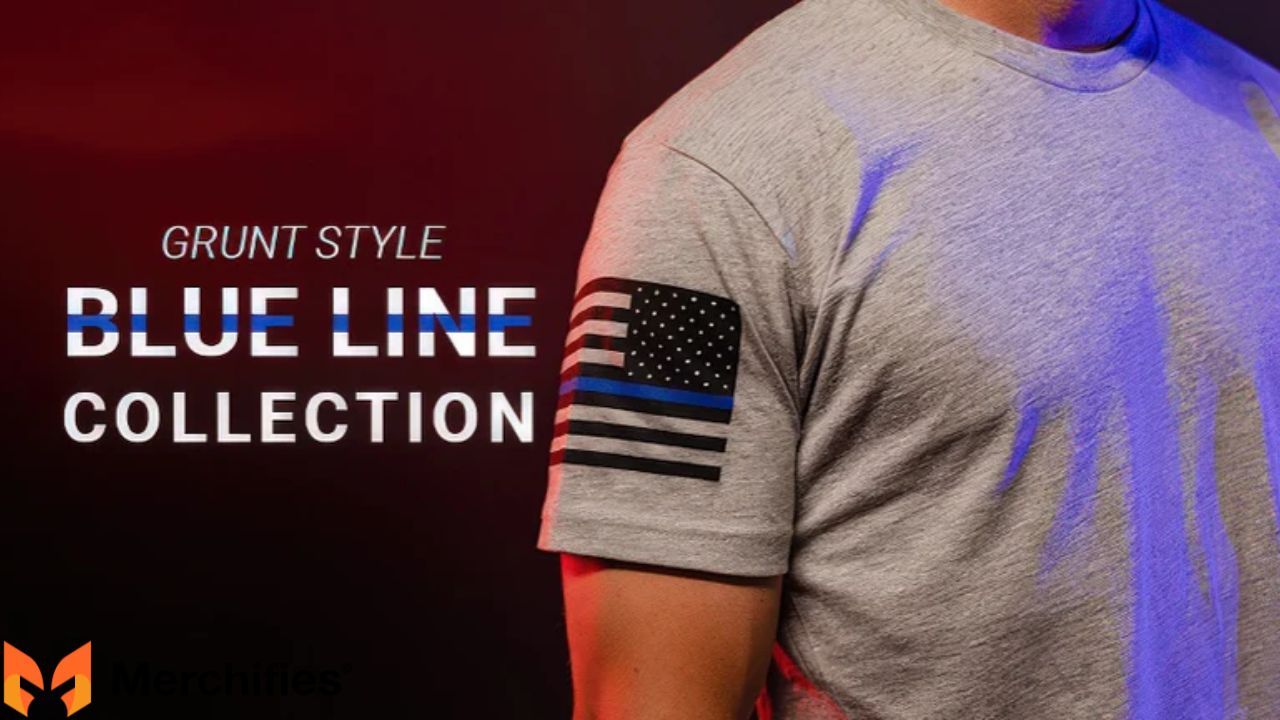
Mission clarity means a five-year-old could explain what your campaign does. 22 Kill stops veteran suicide. Combat Flip Flops creates jobs instead of war. Honor The Contract demands government accountability. Simple missions spread faster and stick longer than complex multi-point programs.
Veteran authenticity isn't just having a veteran on the team. It's veterans leading strategy, making decisions, and showing their faces. When Army Rangers Griffin and Lee explain Combat Flip Flops, you believe them. When a marketing agency runs a "support the troops" campaign, you wonder where the money actually goes.
Transparent impact builds trust in an era of nonprofit scandals. Successful veteran apparel brands publish exact numbers: dollars raised, veterans served, therapy sessions funded. They show receipts. They admit when campaigns underperform. This transparency turns customers into evangelists.
Community building transforms buyers into members. These campaigns create spaces—physical and digital—where supporters connect, share stories, and organize local events. The shirt becomes a membership card to a tribe working toward the same mission.
T-shirts work as campaign vehicles for three reasons: they're wearable billboards that spark conversations, they're affordable enough for mass participation, and they create visible solidarity when worn in groups. A bumper sticker hides on your car. A t-shirt advertises your values everywhere you go.
The campaigns below mastered these elements. They turned cotton and ink into cultural movements.
Campaign #1 - The 22 Kill Challenge: How 22 Pushups Became a National Movement
Summer 2016. Your social media feeds filled with videos of friends, celebrities, and strangers dropping for pushups. Some in gym clothes. Some in business suits. All counting to 22. All nominating others to do the same. All posting with #22Kill.
In three months, the 22 Kill pushup challenge became one of the most famous veteran t-shirt campaigns in modern history—not because of advertising budgets, but because it made participation impossible to ignore.
The campaign launched to address a grim statistic: 22 veterans die by suicide every day in America. That number, widely circulated by veteran advocacy groups in the mid-2010s, represented a crisis that most civilians didn't know existed. 22 Kill's founders—veterans frustrated by the gap between military sacrifice and public awareness—created a challenge designed to make the number unforgettable.
The mechanic was brilliantly simple. Do 22 pushups daily for 22 days. Record yourself. Post the video with #22Kill. Nominate friends to continue the chain. That's it. No equipment needed. No special skills required. No donation minimum. Just your body, a camera, and 22 days of commitment.
The Viral Mechanic That Hooked Millions
Why did 4-5 million people participate when most charity challenges fizzle after a few hundred? The campaign nailed four elements that drive viral spread.

Low barrier to entry meant almost anyone could participate. You didn't need money, special equipment, or athletic ability. Modified pushups counted. Knee pushups counted. Even wall pushups for injured or elderly participants counted. The goal wasn't fitness—it was awareness and solidarity.
Shareable video format exploited social media algorithms perfectly. In 2016, Facebook prioritized video content, especially content that generated comments and shares. Each nomination tagged multiple friends, exponentially expanding reach. The algorithm rewarded participation with visibility.
Nomination mechanic created social pressure in the best way. When your cousin, coworker, or college roommate nominated you publicly, ignoring the challenge felt uncomfortable. You either participated or actively declined—and most people chose participation over explaining why they wouldn't support veterans for 22 days.
Physical challenge appeal tapped into fitness culture's rise. CrossFit enthusiasts, yoga instructors, high school athletes, and weekend warriors all participated. The challenge gave them a way to showcase fitness while supporting a cause. Dual motivation drove higher completion rates than pure charity asks.
Celebrity participation amplified reach exponentially. When Dwayne "The Rock" Johnson, Chris Pratt, and military-friendly celebrities posted their 22 pushups, their combined 100+ million followers saw the campaign. Each celebrity endorsement triggered thousands of new participants.
The peak hit between July and August 2016. Facebook feeds became pushup compilation reels. Local news segments featured community participation. Gym chains organized group challenges. The campaign achieved something rare in social media: it dominated the conversation for weeks without paid promotion.
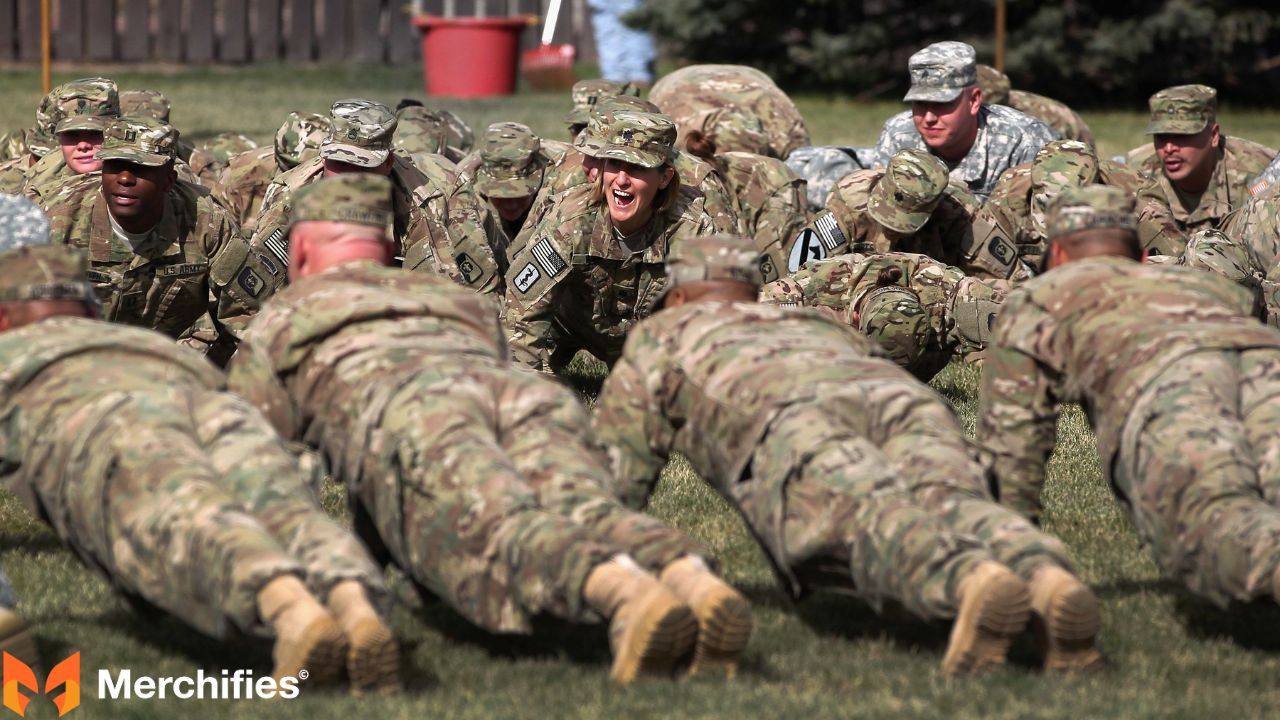
The Numbers Behind the Movement
Hard data separates viral moments from meaningful campaigns. 22 Kill's impact shows in three categories: participation metrics, social reach, and real-world behavioral change.
Participation reached 4-5 million people globally, with roughly 60% from the United States. The campaign spread to 50+ countries, with strong participation in Canada, UK, Australia, and military-heavy regions. Veterans, active-duty military, military families, and civilians all participated at significant rates.
Social media impressions exceeded 50 million across Facebook, Instagram, Twitter, and YouTube. The #22Kill hashtag generated hundreds of thousands of posts. Related hashtags like #22PushupChallenge and #VeteranSuicideAwareness saw traffic spikes of 400-800% during peak months. Media coverage included CNN, Fox News, local stations, and military publications.
Real-world behavioral impact proved the campaign worked beyond vanity metrics. The VA Suicide Prevention Hotline reported a 33% increase in calls during July-August 2016 compared to the same period in 2015. Google Trends data showed searches for "veteran suicide" increased 156% during the campaign. "VA mental health services" searches rose 89%.
The t-shirt component generated $937,500 in revenue from approximately 75,000 shirts sold between June and December 2016. Shirts retailed for $24.99-$27.99, with profits funding suicide prevention programs, crisis hotline support, and veteran mental health advocacy. The organization maintained transparent reporting, publishing quarterly impact statements showing exactly how funds were allocated.
Compare these numbers to typical nonprofit campaigns. The ALS Ice Bucket Challenge—the gold standard for viral charity—reached 17 million participants at its peak. 22 Kill achieved 25-30% of that reach with zero advertising budget and a fraction of the planning. For veteran-focused campaigns, these numbers were unprecedented.
Design Elements That Defined an Era
The 22 Kill shirt became instantly recognizable in veteran communities. The design choices weren't accidents—they were strategic decisions that communicated mission and urgency.
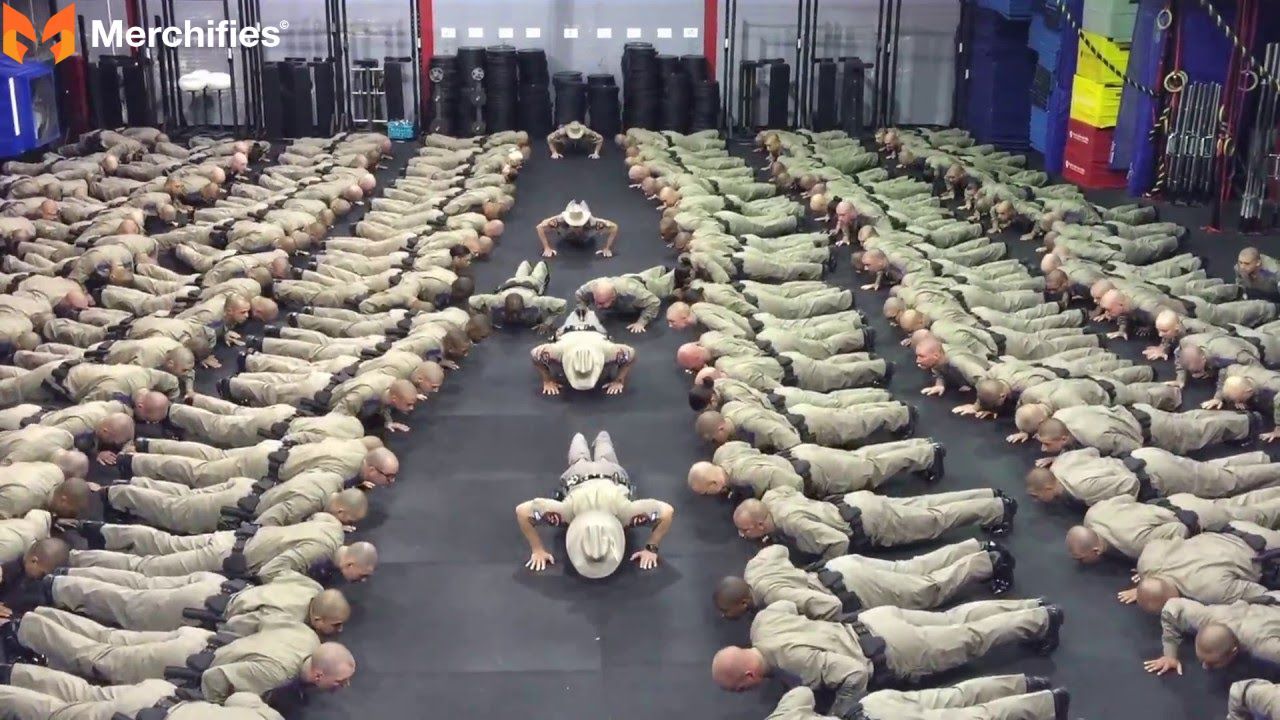
The bold "22" graphic dominated the chest, rendered in distressed military stencil font. The number filled the space aggressively, impossible to miss from 20 feet away. This sizing choice meant the shirt worked as a billboard, sparking questions from strangers: "What's 22?" That question opened the door to education.
The word "Kill" appeared in tactical lettering, sometimes surrounded by subtle military imagery like dog tags, rifles, or memorial wreaths. The aggressive language was intentional—it grabbed attention and reflected military culture's direct communication style. Veterans appreciated the lack of sanitization. Civilians found it provocative enough to ask questions.
The tagline "22 A Day Is 22 Too Many" appeared on many shirt variations, creating a complete message even for people unfamiliar with the campaign. The phrase's structure made it memorable and repeatable. It gave wearers a ready answer when asked about their shirt.
The color palette leaned heavily on black with red or white accents, occasionally incorporating military green or navy. Black shirts dominated sales because they matched veteran culture's preference for subdued colors and worked across casual, gym, and outdoor settings. The dark colors also allowed the "22" to pop in high contrast.
Material and fit mattered more than many charity campaigns realized. 22 Kill used quality tri-blend fabrics and modern athletic cuts instead of cheap cotton boxy tees. Veterans actually wanted to wear these shirts, not just support the cause and stuff the shirt in a drawer. This quality decision increased visible wear, which increased organic advertising.
The design resonated because it looked and felt like veteran culture, not like corporate America's version of military appreciation. No eagles. No waving flags. No "thank you for your service" platitudes. Just a number, a message, and an invitation to learn more.
Legacy and Long-Term Impact
Summer 2016 ended, but 22 Kill didn't disappear like most viral campaigns. The organization repeated the challenge annually from 2017-2022, each year reaching 500,000-1.5 million participants. The diminishing returns were expected—viral mechanics rarely scale for repeated years—but the sustained participation proved the campaign had built a community, not just a moment.
The "22 a day" statistic entered mainstream consciousness in ways that decade-long advocacy campaigns hadn't achieved. Late-night hosts referenced it. Lawmakers cited it during veteran healthcare debates. High school students wrote reports about it. The campaign's messaging succeeded where government PSAs and nonprofit white papers had failed: it made the suicide crisis memorable and personal.
The PTSD awareness apparel category exploded after 22 Kill proved the market existed. Til Valhalla Project's "Keep Writing Your Story" campaign, Mission 22's merchandise, and Headstrong Project's "End The Stigma" shirts all followed 22 Kill's blueprint: bold graphics, direct messaging, transparent impact reporting, and veteran-led execution.
Subsequent campaigns borrowed the challenge mechanic. Mission 22 created a 365-day challenge. Til Valhalla launched fitness fundraisers. Team Rubicon adapted the nomination structure for disaster response awareness. The viral formula—simple daily action, video proof, social nomination—became standard for veteran nonprofit campaigns.
The campaign faced criticism worth acknowledging. Mental health researchers debated the accuracy of the "22 per day" statistic, with some studies suggesting numbers ranging from 17-24 depending on data sources and calculation methods. 22 Kill responded by emphasizing that any number above zero represented a crisis, and that quibbling over exact figures missed the point: veterans were dying preventably.
What made 22 Kill one of the most famous veteran t-shirt campaigns wasn't just the viral moment—it was the sustained pressure on systems that failed veterans. The campaign's visibility contributed to VA funding increases for mental health services, expanded crisis intervention training, and growing acceptance of therapy in military culture.
Eight years later, you still see those shirts at VFW halls, veteran-owned gyms, and military town diners. That staying power is the ultimate measure of a campaign's success.
Campaign #2 - Honor The Contract: When History Meets Modern Advocacy
July 2025. The VFW and Grunt Style launched a campaign that looked backward to push forward—reviving a 1930s-era design to address 2025's veteran suicide crisis.
Honor The Contract merged institutional power, historical authenticity, and modern advocacy into one of the most visually striking successful veteran apparel brands to emerge in recent years. Where 22 Kill went grassroots and viral, Honor The Contract chose institutional backing and long-term advocacy.
The campaign's central message: America has a contract with service members that extends far beyond their discharge dates. Provide care. Deliver benefits. Prevent suicide. Honor the contract. When the government fails, it's not neglect—it's betrayal.
This framing recast veteran suicide from an individual mental health issue to a national failure of responsibility. That shift in narrative opened political space for advocacy that pure awareness campaigns couldn't achieve.
Reviving a 1930s Symbol for 2025 Problems
The campaign design came from the Bonus Army era—1932, when 43,000 WWI veterans and families marched on Washington demanding their promised service bonuses. The original posters, created during protests that ended in military force against veterans, featured bold block lettering and wartime propaganda aesthetics.
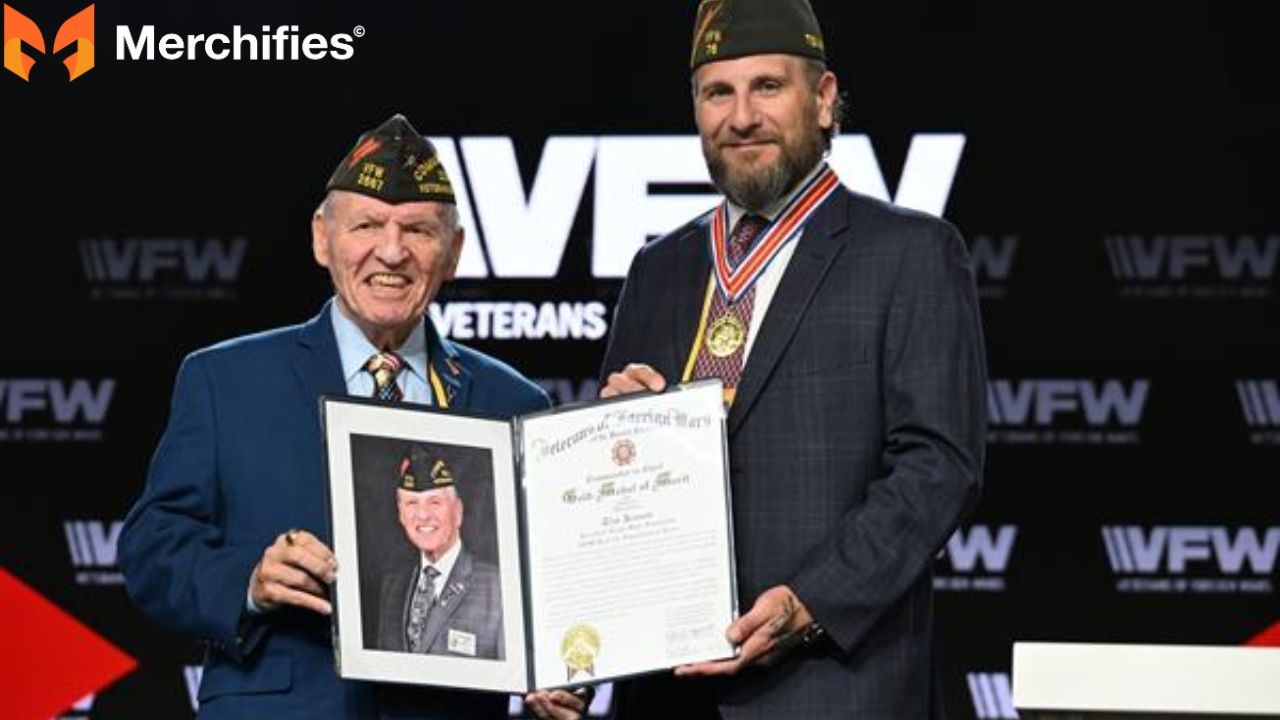
VFW's archives held these original designs. When planning a 2025 suicide prevention campaign, designers recognized the parallel: veterans promised care, betrayed by systems, demanding government accountability. The visual connection between 1932 and 2025 was too powerful to ignore.
Historical authenticity gave the campaign immediate credibility with older veterans who knew the Bonus Army story and younger veterans learning it for the first time. The design's age communicated a message: this isn't a new problem. America has been failing veterans for a century.
The adapted design maintained the original's wartime poster structure—distressed textures, propaganda-style fonts, heavy visual weight—while updating imagery for modern audiences. The result looked vintage but felt contemporary, appealing to collectors of retro military gear and veterans who appreciated historical references.
This approach differed sharply from most veteran apparel, which defaults to modern tactical aesthetics or patriotic clichés. Honor The Contract looked like a museum artifact with a mission. That uniqueness made it stand out in overcrowded veteran merchandise markets.
The message framing transformed suicide from a medical crisis to a political failure. Instead of "veterans need help" (which can imply personal weakness), the campaign insisted "government must deliver promised care" (which assigns systemic responsibility). This reframing mobilized different emotions—not pity, but anger at broken promises.
The Institutional Power Behind the Campaign
Where 22 Kill built grassroots participation, Honor The Contract leveraged existing infrastructure to achieve immediate scale.
VFW's 1.4 million members provided instant distribution. Every post, every hall, every email list could promote the campaign. Members who'd spent decades advocating for veterans rallied around a campaign that finally articulated their frustration with government inaction. The institutional backing meant credibility, reach, and organizational muscle.
Grunt Style's 5 million social media followers brought youth and marketing sophistication. Founded by Army veteran Daniel Alarik, Grunt Style had become the dominant veteran apparel brand through aggressive patriotic messaging, military humor, and unapologetic pro-veteran politics. Their audience—younger veterans, active-duty military, and military-friendly civilians—represented exactly the demographic that campaigns needed to reach.
The partnership combined VFW's legacy credibility with Grunt Style's modern marketing. Older veterans trusted VFW. Younger veterans wore Grunt Style. Together, they covered the generational spectrum.
Beneficiary transparency strengthened the campaign. Proceeds funded Irreverent Warriors, a nonprofit founded by Marine Captain Donny O'Malley focused on veteran suicide prevention through humor and community. Their signature program, Silkies Hikes—events where veterans hike in short shorts to break mental health stigma—embodied military culture's dark humor and brotherhood.
Irreverent Warriors proved effectiveness through participation metrics. Events consistently drew 200-500+ veterans per hike. Participants reported reduced isolation, increased mental health service usage, and stronger peer support networks. The organization published impact data showing measurable outcomes from their unorthodox approach.
This clear impact path—shirt purchase funds Silkies Hikes, which provably reduce isolation and increase help-seeking behavior—gave buyers confidence their money funded solutions, not administrative overhead.
The institutional model allowed rapid scaling impossible for grassroots campaigns. Honor The Contract sold 15,000+ shirts in the first three weeks, generating $374,000+ in revenue (assuming $25 average retail price after costs). For comparison, 22 Kill took several months to reach similar sales volumes.
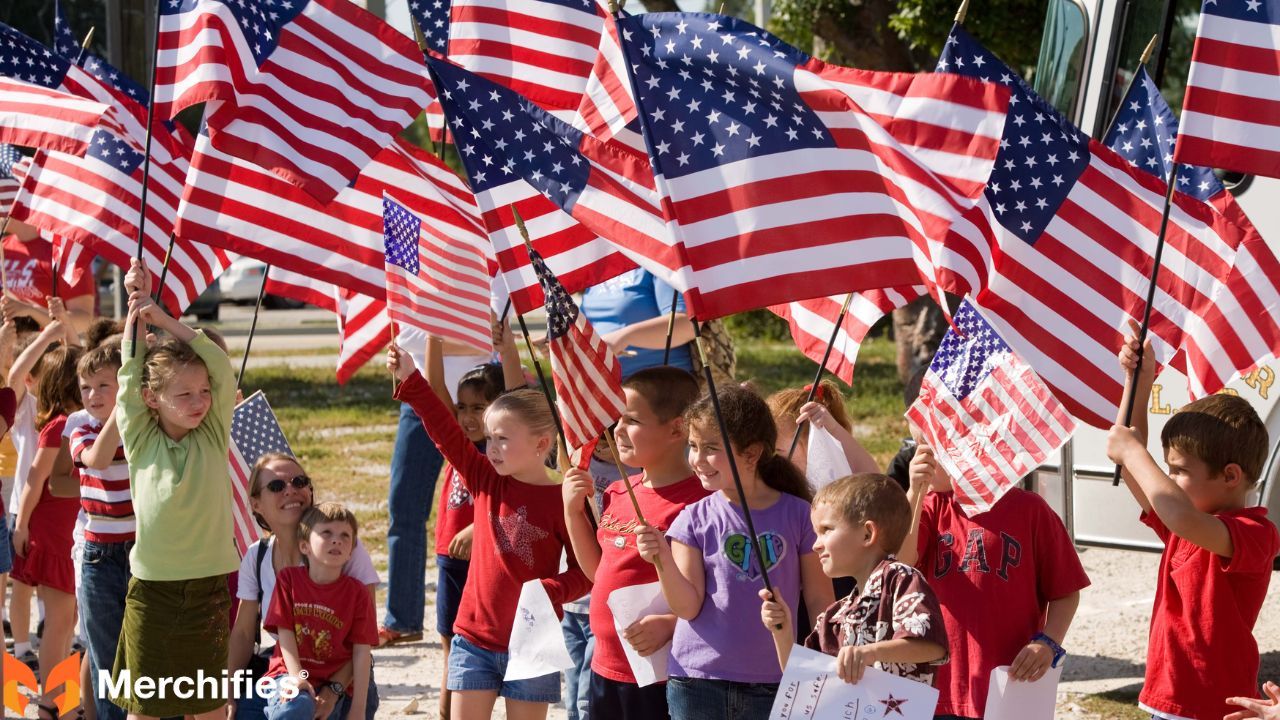
Design Philosophy: Gritty Patriotism Meets Political Edge
Honor The Contract's aesthetic divided audiences intentionally. You either loved the aggressive political messaging or avoided it entirely. This polarization actually strengthened community building—wearers identified each other as ideological allies, not just cause supporters.
Wartime poster-style lettering used bold sans-serif fonts with condensed spacing, creating visual density and weight. The text demanded attention. The layout borrowed from WWII propaganda posters, evoking national mobilization and shared sacrifice.
The weathered, distressed aesthetic made shirts look aged immediately. Ink cracks. Faded colors. Worn textures. This aging communicated the campaign's historical connection and suggested that veterans had been fighting this battle for decades. The visual distress mirrored the emotional weight of the message.
Patriotic red, white, and blue appeared, but black dominated the palette. The dark background prevented the design from reading as celebratory patriotism. This was angry patriotism—demanding America live up to its promises, not celebrating the status quo.
The political messaging went harder than most veteran campaigns risk. "Failure to care for veterans isn't neglect, it's betrayal" appeared on some variants. "Government's debt to veterans doesn't expire at discharge" on others. The text named the enemy: not mental illness, but government inaction.
This political edge worked because VFW provided institutional cover. When a scrappy nonprofit calls out the government, it risks looking fringe. When VFW—the nation's largest veteran service organization—makes the same accusation, it becomes legitimate advocacy.
The design strategy embedded a call to action. The shirt wasn't just awareness raising—it was pressure campaign advertising. Wearers became walking billboards demanding legislative action on veteran mental health funding, VA reform, and suicide prevention resources.
Early Performance and Market Reception
Three weeks after launch, Honor The Contract had sold 15,000+ shirts, generated 8.2 million social media impressions, and sparked 200+ media mentions across military publications, local news, and veteran blogs.
Sales demographics skewed toward active veterans aged 30-55, politically engaged military families, and VFW members. Grunt Style's younger audience participated, but the campaign's primary market proved to be established veterans already involved in advocacy. This concentrated demographic made sense—the campaign's political messaging required baseline knowledge of veteran policy issues.
Social media performance showed strong engagement rates (5-8%) but lower viral spread than 22 Kill (which hit 12-15% during peak weeks). Honor The Contract traded viral breadth for depth. Followers commented extensively, shared posts with detailed personal stories, and organized local VFW events around the campaign. The conversation quality exceeded typical campaign chatter.
Retail strategy differed from 22 Kill's direct-to-consumer model. VFW posts sold shirts locally. Grunt Style's website handled online orders. This hybrid distribution matched each partner's strengths and allowed the campaign to reach older veterans (who preferred in-person VFW purchases) and younger veterans (who shopped online exclusively).
What made this one of the most successful veteran apparel brands wasn't just early sales—it was the sustainable model. Unlike viral campaigns that spike and crash, Honor The Contract built an ongoing collection. New designs launched quarterly. Annual campaigns marked Memorial Day, Veterans Day, and 22 Kill awareness days. The brand became permanent, not momentary.
Market reception revealed generational divides. Older veterans praised the historical connection and institutional backing. Younger veterans appreciated the aggressive politics but some felt the vintage aesthetic looked dated. Military families loved the clear beneficiary (Irreverent Warriors) and transparent impact reporting. Civilians interested in veteran issues bought the shirts as solidarity signals.
The political edge attracted and repelled audiences as intended. Conservative-leaning veteran communities embraced the government accountability messaging. Progressive veteran groups appreciated the systemic critique but worried the confrontational tone alienated potential allies. This polarization, predicted by campaign designers, ultimately strengthened brand identity among target demographics.
Six months into the campaign, Honor The Contract proved a key insight: famous veteran t-shirt campaigns don't need viral spread if they build sustainable communities. Steady sales, institutional backing, and clear impact create staying power that viral moments can't match.
Campaign #3 - Combat Flip Flops: Business Not Bullets
Not all successful veteran apparel brands start with campaigns. Some start with combat boots hitting Afghan dust and a crazy idea about flip flops creating peace.
Army Rangers Matthew "Griff" Griffin and Donald Lee spent their deployments watching development aid disappear into corruption while poverty continued breeding insurgents. After returning home in 2010, they asked a question that launched a social enterprise: What if we fought extremism with paychecks instead of bullets?
Combat Flip Flops turned t-shirts into funding mechanisms for jobs in conflict zones—Afghanistan, Colombia, Laos—proving that successful veteran apparel brands could build peace through business, not charity.
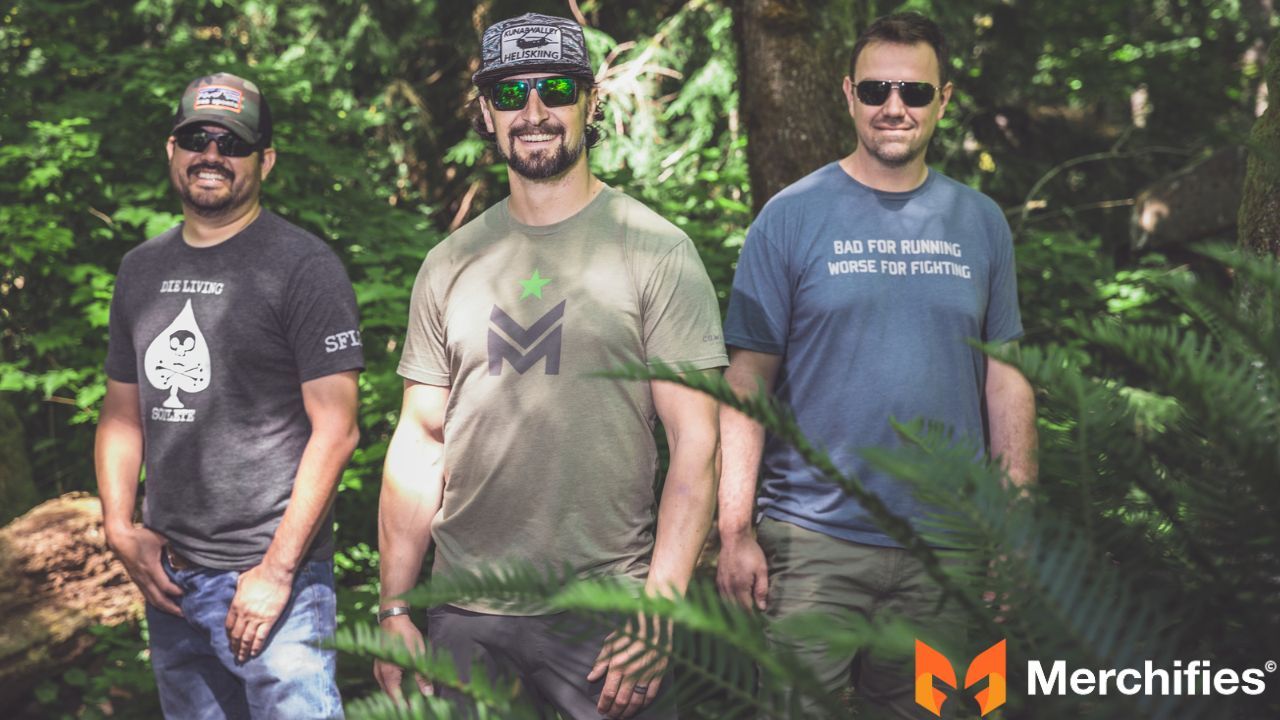
From Afghanistan Combat Zones to Social Enterprise
Griffin and Lee's origin story shaped everything that followed. As Rangers in Afghanistan, they worked with locals who chose between Taliban paychecks (which fed families) and coalition support (which offered uncertain futures). Economic desperation, not ideology, drove many insurgent recruits.
The realization hit hard: aid money built schools that insurgents burned, but jobs created stakeholders in peace. Someone earning a living making flip flops doesn't want war disrupting their income. Economic opportunity worked where bullets failed.
After separating from the Army, they started Combat Flip Flops with a simple thesis: employ artisans in conflict zones making consumer goods for American markets. Profits fund more jobs. More jobs reduce poverty. Reduced poverty lowers extremist recruitment. It's counterinsurgency through capitalism.
The mission evolution tracked their learning curve. Early messaging focused on "Make Ripples" (2012-2015)—the idea that small economic actions create expanding impact. This resonated with military audiences but confused civilians. Why flip flops? What's the connection to veterans?
Phase 2 shifted to "Business Not Bullets" (2016-2019), explicitly framing the company as an alternative to military intervention. This clearer message attracted veteran entrepreneurs, business school students, and consumers tired of military-first foreign policy. The brand found its voice: peace through economic development, led by veterans who'd tried the military approach.
Phase 3, "We Don't Pull Out" (2020-present), leaned into military humor while maintaining mission focus. The provocative slogan attracted attention, sparked conversations, and embodied veteran culture's irreverent communication style. It also communicated commitment—Combat Flip Flops wouldn't abandon artisans when situations got difficult.
Geographic focus expanded strategically. Afghanistan came first (2012)—the fight they'd participated in. Colombia followed (2015)—conflict-affected communities needing economic alternatives to coca farming. Laos (2017)—employing artisans clearing unexploded ordnance from American bombs dropped 50+ years earlier. Each location connected to American military history, creating natural storytelling opportunities.
The social enterprise model faced skepticism. Veteran nonprofits questioned whether business could achieve what charity hadn't. Traditional businesses doubted whether mission-driven companies could compete on quality and price. Griffin and Lee had to prove both sides wrong simultaneously.
The T-Shirt Line That Funds Global Change
Combat Flip Flops' signature product was flip flops (obviously), but their t-shirt line generated 35% of revenue while requiring lower production costs and simpler international logistics than footwear.
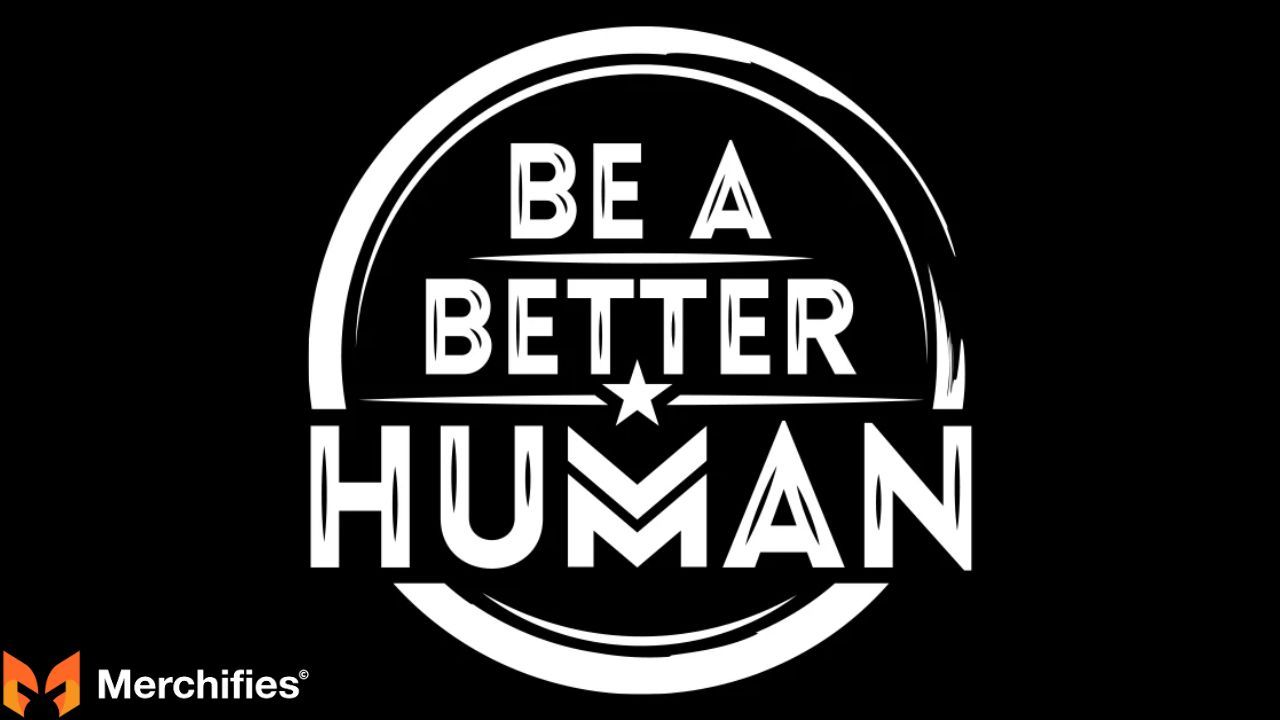
"Be A Better Human®" became the flagship t-shirt campaign, embodying the company's philosophy in four words. The slogan worked on multiple levels: advice to consumers (support ethical businesses), a mission statement (create opportunities for others), and a rebuke to simplistic foreign policy (humans solving human problems beats military intervention).
The shirt's design kept it simple: bold text, minimal graphics, quality tri-blend material. No flags. No eagles. No military imagery. Just a challenge to live better. This universality meant non-veterans bought the shirts, expanding the customer base beyond typical veteran apparel markets.
Sales data showed the shirt's power: 40,000+ "Be A Better Human" shirts sold between 2013-2024, generating approximately $600,000 in revenue. Customer surveys revealed that 73% of buyers reported having conversations about the company's mission after being asked about their shirt—turning customers into organic brand ambassadors.
"Slow Is Smooth, Smooth Is Fast" adapted the military adage to peacebuilding. The phrase, familiar to anyone who's been through military training, means: rushing creates mistakes, steady execution achieves faster results. Applied to conflict zones, it communicated that sustainable job creation (slow) accomplishes more than temporary aid projects (rushed).
This design appealed specifically to veterans who understood the reference and appreciated seeing military wisdom applied to civilian peacebuilding. Sales concentrated in veteran entrepreneur communities, military transition programs, and veteran business school cohorts.
The "Ranger Panties" collection leaned hard into military humor. Ranger panties—tiny silkies shorts worn during Army physical training—became an inside joke in military culture. Combat Flip Flops created shirts celebrating the shorts, with proceeds funding job creation. The humor disarmed skeptics while communicating veteran authenticity. Only veterans would make "Ranger Panties" a t-shirt theme.
Transparency made the model work. Combat Flip Flops published detailed impact reports showing exactly how shirt sales funded jobs. $25 shirt purchase → $8 profit → $8 funds 2 hours of artisan wages in Kabul or Bogotá. Customers saw direct connection between purchase and impact.
Customer testimonials consistently mentioned the conversation-starting power of Combat Flip Flops shirts. Buyers reported 5-10 conversations per shirt about veteran entrepreneurship, social enterprise models, and alternatives to military intervention. The shirts educated Americans about complex foreign policy issues through casual conversations—impact that traditional advocacy campaigns struggle to achieve.
The Shark Tank Effect and Scaling Impact
Combat Flip Flops appeared on Shark Tank, the ultimate validation for consumer businesses. Griffin pitched the mission: veterans using business to promote peace. Lee demonstrated the flip flops. The Sharks leaned in.

Mark Cuban and Lori Greiner made an offer: $150,000 for 15% equity, plus mentorship and connections. Combat Flip Flops accepted. The deal provided capital, but more importantly, it delivered credibility and exposure.
Post-Shark Tank sales increased 450% in one year. The show aired to 7-9 million viewers. The segment's YouTube clips accumulated 2+ million views. Media coverage followed—Forbes, Inc., Military Times, veteran podcasts. The company went from known in small veteran entrepreneur circles to recognizable nationally.
The legitimacy boost mattered more than the capital injection. Skeptics who questioned whether a t-shirt company could create peace suddenly took the model seriously. Business schools invited Griffin and Lee to speak. Veteran organizations partnered on campaigns. Retailers stocked products. Shark Tank transformed Combat Flip Flops from interesting experiment to proven business model.
The exposure also attracted criticism. Some veteran communities felt the company profited from military stories without directly serving veterans. Others questioned whether job creation in conflict zones actually reduced extremism. Combat Flip Flops responded with increased transparency—publishing third-party audits, inviting journalist visits to production sites, and sharing both successes and failures in detailed blog posts.
Media training from the Shark Tank experience improved the founders' advocacy. They learned to communicate complex foreign policy ideas in soundbites, frame business decisions in emotional storytelling, and leverage media appearances for maximum impact. These skills made them better spokespeople for veteran entrepreneurship and social enterprise models.
The Shark Tank appearance demonstrated why Combat Flip Flops belonged among famous veteran t-shirt campaigns: it proved veterans could create successful veteran apparel brands that operated as real businesses, not just charitable merchandise operations.
Measuring Success Beyond Sales
Combat Flip Flops tracked impact in three categories: financial sustainability, employment creation, and educational opportunity.
Financial metrics showed real business viability. $1.7 million in t-shirt sales alone between 2012-2024 (total company revenue exceeded $8 million across all products). The company achieved profitability in year four, maintained positive cash flow for six consecutive years, and employed 15 full-time staff in the United States. These numbers proved social enterprise could scale beyond feel-good side projects.
Employment creation measured direct mission impact. 350+ artisan jobs created across Afghanistan, Colombia, and Laos. Average employment duration: 3.2 years (showing stable work, not temporary gigs). Artisan wages averaged 40-60% above local minimums, providing genuine economic improvement for families. Third-party audits confirmed working conditions, fair wages, and transparent supply chains.
The multiplier effect extended beyond direct employees. Each artisan job supported an average of 4.3 family members, meaning 1,500+ people benefited from the employment created. Many artisans used stable income to start side businesses—food stalls, motorcycle repair, small farming—creating additional economic activity in their communities.
Educational impact focused on Afghanistan, where the company funded education for 800+ students (primarily girls) through partnerships with local schools. The calculation: every 50 t-shirts sold funded one year of schooling for one student. Customers could literally count their impact—buy 5 shirts, fund a student for one month.
This education component addressed root causes of extremism more directly than jobs alone. Educated girls became educated mothers who raised educated children in communities previously dominated by extremist ideology. The long-term impact wouldn't be measurable for decades, but the investment made strategic sense.
Long-term sustainability separated Combat Flip Flops from campaign-based organizations. While 22 Kill and Honor The Contract built time-limited campaigns around specific awareness goals, Combat Flip Flops operated as an ongoing business. No end date. No victory condition. Just continuous job creation and community development.
This model attracted different customers than traditional veteran campaigns—people who wanted to support sustainable solutions instead of one-time donations. The repeat customer rate (47%) exceeded typical e-commerce benchmarks (28-32%), showing buyers believed in the long-term mission.
Why this matters: successful veteran apparel brands can operate as real businesses with mission outcomes that exceed charity models. Combat Flip Flops proved veterans could build profitable companies that solve problems military force couldn't touch.
Comparing Three Successful Approaches: What They Share and Where They Differ
22 Kill. Honor The Contract. Combat Flip Flops. Three wildly different strategies. Three proven successes. Zero overlap in execution, but total alignment on six core principles.

Common Success Elements Across All Three Campaigns
Veteran authenticity drove every major decision. 22 Kill: founded by veterans frustrated by suicide rates they'd witnessed. Honor The Contract: VFW's 1.4 million veteran members plus Grunt Style's veteran-led company. Combat Flip Flops: Army Rangers who'd deployed to the conflicts their business addressed. This authenticity couldn't be faked or hired—it came from lived experience.
Authenticity mattered because veterans spot posers immediately. A civilian-run campaign claiming to understand military culture gets shredded on social media within hours. Veteran-led campaigns earn trust automatically and benefit from doubt when challenged. The credibility shortcut is massive.
Clear calls to action eliminated the classic nonprofit problem: "This is bad, please care." All three campaigns offered concrete solutions. 22 Kill: do pushups, share videos, buy shirts that fund hotlines. Honor The Contract: buy shirts funding therapy through Irreverent Warriors, pressure government for policy change. Combat Flip Flops: purchase products that directly create jobs. No vague "raising awareness"—specific actions with specific outcomes.
This specificity made sharing easier. When someone asked "How can I help?", wearers had immediate answers. The path from concern to action took seconds, not the weeks required to research legitimate organizations, compare overhead rates, and decide where to donate.
Transparent impact reporting built trust in an era of nonprofit scandals. All three published specific numbers: dollars raised, veterans helped, jobs created, therapy sessions funded. They admitted failures, shared setbacks, and celebrated successes with equal transparency. This honesty transformed skeptics into supporters.
Compare this to typical nonprofit marketing: emotional appeals, vague impact claims, polished promotional videos showing gratitude but no metrics. Donors increasingly demand proof their money achieves results. These campaigns delivered receipts.
Emotional plus intellectual appeal engaged both heart and mind. The emotional hook: veteran suicide, betrayed promises, poverty breeding violence. The intellectual framework: systems failing veterans, government accountability gaps, economic alternatives to military intervention. Together, these appeals recruited diverse audiences—people motivated by empathy and people motivated by problem-solving.
This dual appeal prevented the campaigns from becoming pure emotional manipulation. They made people feel, then gave them frameworks to think. That combination created educated advocates, not just donors.
Community building transformed transactions into memberships. All three created spaces—physical events, online groups, annual gatherings—where supporters connected beyond purchasing. These communities sustained engagement between campaigns, organized local events, and recruited new members.
The shirts became tribal identifiers. Strangers wearing 22 Kill shirts acknowledged each other in airports. Honor The Contract wearers struck up conversations at VFW halls. Combat Flip Flops customers organized meetups to discuss veteran entrepreneurship. The apparel marked belonging to something bigger than a brand.
Product quality separated these from typical charity merchandise. No cheap cotton. No boxy fits. No designs that screamed "I felt guilty so I bought this." All three used quality materials, modern cuts, and designs people actually wanted to wear. This quality decision increased visible wear, which increased organic marketing, which increased reach.
When charity shirts end up as sleep wear or garage rags, the campaign visibility dies. When shirts become regular rotation wardrobe items, every wearing advertises the cause to hundreds of people. Quality drove visibility. Visibility drove conversations. Conversations drove impact.
Three Divergent Paths to Success
The strategies diverged completely, proving no single model owns success.
22 Kill went grassroots viral: free participation, short-duration campaign (though repeated annually), bottom-up organization, broad appeal including non-veterans, dependence on algorithmic amplification, explosive growth then gradual decline. This approach worked for awareness goals, time-sensitive advocacy, and movements targeting mainstream audiences. The costs: difficult to sustain, vulnerable to algorithm changes, risk of message dilution.
Honor The Contract chose institutional advocacy: top-down organization leveraging VFW infrastructure, historic gravitas through 1930s design revival, ongoing collection not time-limited campaign, veteran-focused with political edge, sustained steady growth without viral spikes. This approach worked for policy advocacy, multi-year initiatives, and movements building political pressure. The costs: slower initial growth, less mainstream penetration, requirement for strong institutional partners.
Combat Flip Flops built social enterprise: business model prioritizing sustainability over awareness, long-term operation with no end date, global scope addressing root causes, economic solutions instead of awareness, narrow audience depth compensating for limited breadth. This approach worked for complex problems requiring sustained resources, veteran entrepreneurship advocacy, and audiences valuing sustainability over viral moments. The costs: slow scaling, smaller total reach, business risks beyond campaign risks.
When should you use each approach? Grassroots viral for crisis awareness needing immediate public attention. Institutional advocacy for policy battles requiring sustained pressure over years. Social enterprise for complex problems where business models address root causes better than charity.
The existence of three successful models proves what matters more than specific tactics: mission clarity, veteran authenticity, transparent impact, and relentless execution. Choose the strategy that matches your resources, timeline, and theory of change. All three work if executed well.
Lessons for Aspiring Veteran Brand Founders
You've got an idea. A mission. Maybe even a design. Before printing shirts, understand what separates campaigns that quietly fade from successful veteran apparel brands that change lives.
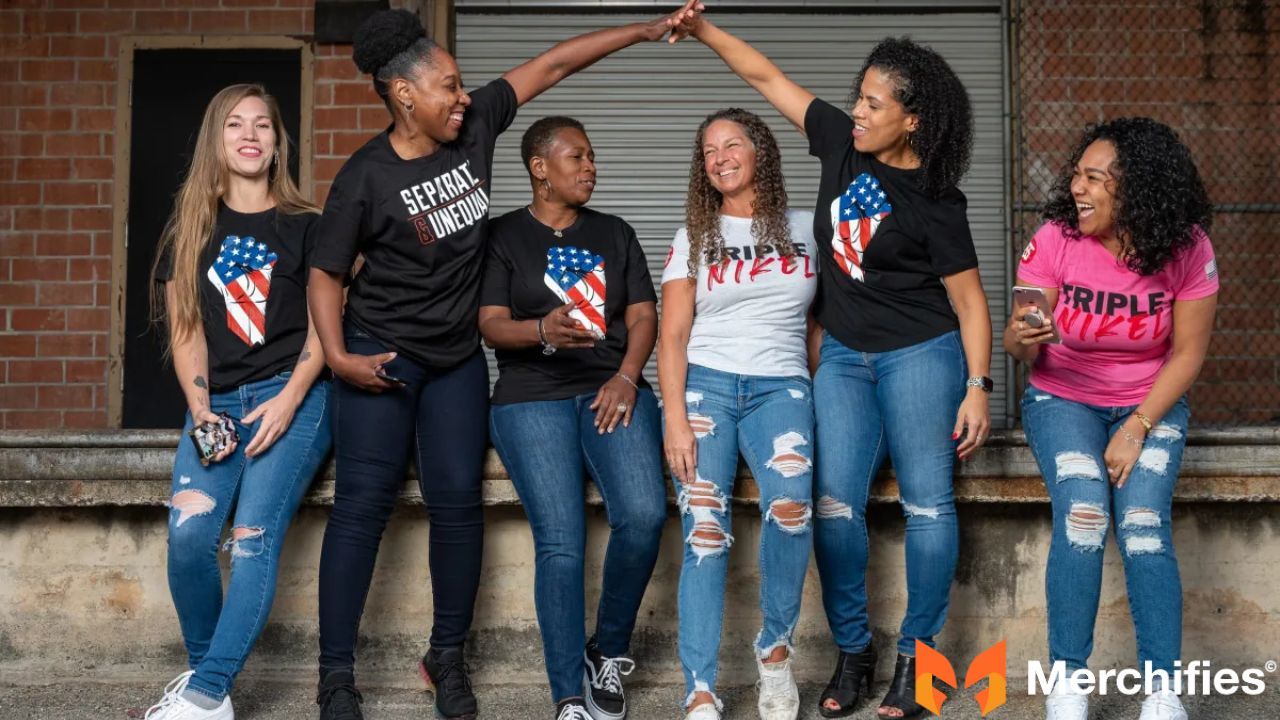
Start With Mission, Not Merch
Combat Flip Flops didn't start with "let's sell shirts." They started with "how do we reduce extremism through jobs?" The shirts came later, as funding mechanisms. 22 Kill didn't start with designs. They started with "how do we make 22 veterans per day unforgettable?" The challenge came first, shirts followed. Honor The Contract built on VFW's decades-long advocacy for veteran benefits. The apparel expressed existing mission.
This sequence matters. Mission-first brands attract loyal customers who value the work beyond the product. Merch-first brands compete on price and design, which means competing with every other veteran apparel company flooding the market.
Your mission must solve real problems veterans face: unemployment, suicide, homelessness, transition challenges, family support, education access. Not "show support" or "honor service"—those aren't problems, they're sentiments. Successful veteran apparel brands fix broken systems.
Test your mission with five-year-old clarity: "We create jobs for veterans" (good). "We build awareness about veteran issues" (too vague). "We fund therapy for veterans with PTSD" (good). "We celebrate military culture" (not a mission, just a vibe).
Build Credibility Before Scaling
All three campaigns built trust in their communities before going national. 22 Kill started with military families sharing in small groups. Combat Flip Flops sold to veteran entrepreneurs who knew Griffin and Lee personally. Honor The Contract leveraged VFW's century of credibility before launching to general audiences.
Start with your own community: military unit buddies, local veteran organizations, regional VFW/American Legion posts. Prove the concept works. Collect testimonials. Document impact. Build portfolio of success before asking strangers to trust you.
Transparency builds trust faster than marketing. Publish exactly where money goes. Share both successes and failures. Admit when campaigns underperform. Show receipts. This radical honesty attracts quality supporters who become evangelists.
Quality determines whether people actually wear your shirts. Spending $2 more per shirt on tri-blend fabric instead of cheap cotton makes the difference between shirts worn weekly and shirts stuffed in drawers. Visible wear is organic advertising worth more than social media ads.
Partnership opportunities accelerate credibility: established veteran nonprofits, veteran-owned businesses, military-friendly corporations, media personalities with military audiences. Partners lend their credibility during your vulnerable early stages. Choose partners whose audiences match your mission.
Don't launch nationally on day one. Build locally, prove impact, then scale. The campaigns that flame out fast almost always skipped the credibility-building phase.
Choose the Right Model for Your Resources
Limited budget? Grassroots viral like 22 Kill: free participation, social sharing, algorithm-friendly content, organic growth. Requires minimal capital but maximum creativity and perfect timing. Best for short-term awareness goals and crisis response.
Institutional connections? Partnership model like Honor The Contract: leverage existing organizations' infrastructure, credibility, and audiences. Requires relationship-building and alignment on mission/values. Best for sustained advocacy and policy change campaigns.
Long-term commitment? Social enterprise like Combat Flip Flops: build real business with mission outcomes, sustainable revenue, ongoing impact. Requires business skills, startup capital, and patience. Best for complex problems where business addresses root causes better than charity.
Hybrid approaches work too: start grassroots to prove concept, then partner with institutions for scaling. Launch social enterprise, then add viral campaigns for specific advocacy moments. Mix strategies as needs evolve.
What makes campaigns become famous veteran t-shirt campaigns isn't the model—it's execution quality. A mediocre viral campaign fails. A mediocre social enterprise fails. A mediocre institutional partnership fails. Excellence in whichever model you choose determines success.
Budget honestly for real impact. If you can't afford quality shirts, transparent impact reporting, and actual program funding, you're not ready to launch. Save until you can do it right. One excellent small campaign beats ten underfunded attempts.
The Future of Veteran Advocacy Through Apparel
These three famous veteran t-shirt campaigns created blueprints, but the next generation will write new playbooks.
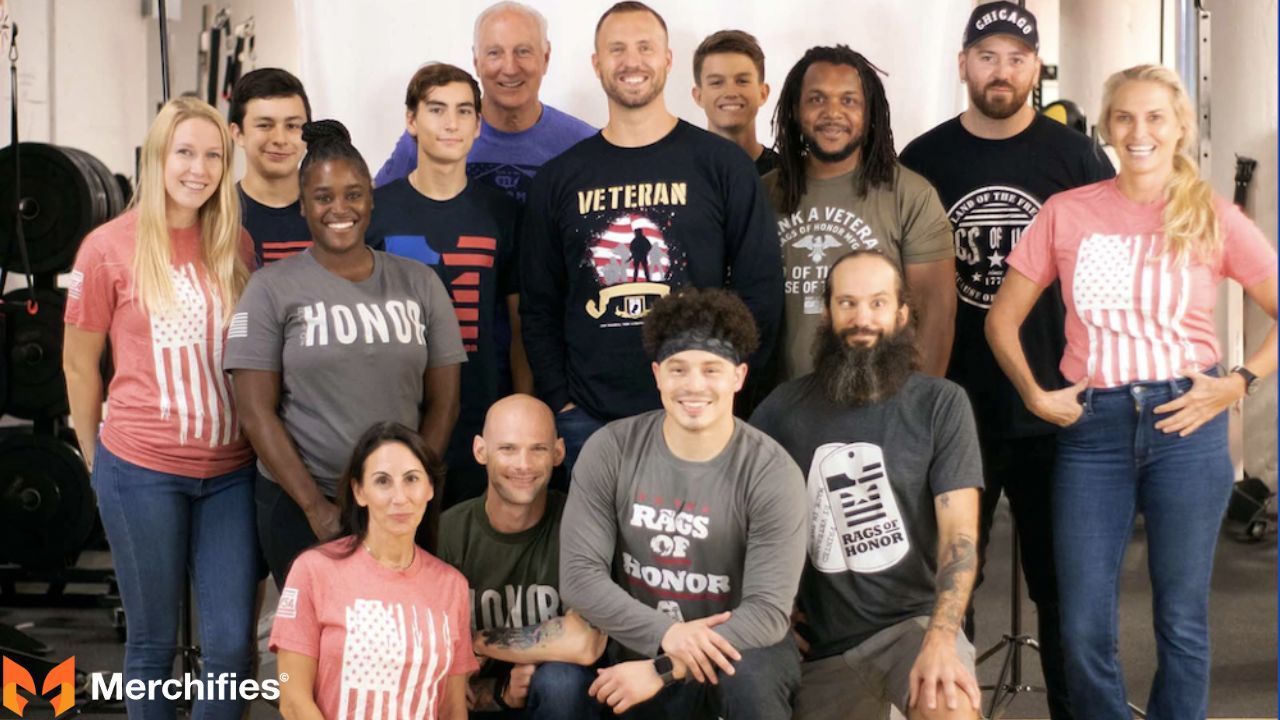
Watch for evolution from awareness to action. The 2010s focused on making civilians aware veterans struggle. The 2020s shifted toward solutions: job creation, therapy access, entrepreneurship support. The 2030s will likely emphasize prevention: addressing military culture issues before discharge, transition preparation beginning years early, family support systems built into service structure.
Technology integration will separate innovative campaigns from outdated approaches. QR codes on shirts linking directly to crisis resources. Augmented reality experiences showing veteran stories when cameras scan designs. NFT digital collectibles funding ongoing programs. Wearable tech tracking participation in challenge campaigns. The veterans who grew up with smartphones will demand digital integration their predecessors never considered.
Successful veteran apparel brands increasingly emphasize sustainability—environmental and financial. Eco-friendly production, ethical supply chains, circular fashion models. The generation entering military service now cares deeply about climate impact. Campaigns ignoring sustainability will lose relevance as this generation takes leadership.
Generation Z veterans bring different approaches: comfort with vulnerability (reducing stigma faster than prior generations), digital-native organizing (TikTok campaigns, Discord communities), diverse perspectives (most diverse military in history), entrepreneurial mindset (grew up in gig economy). Their campaigns will look different from millennial and Gen X efforts.
International expansion seems inevitable. Veterans worldwide face similar challenges: suicide, transition struggles, inadequate care systems. Combat Flip Flops proved American-led campaigns can work globally. Expect more campaigns addressing veteran issues beyond US borders, particularly in countries with large military forces: UK, Israel, South Korea, Australia, Canada, India.
The lasting impact of these famous veteran t-shirt campaigns isn't the specific tactics—it's proving that veterans can build successful veteran apparel brands that actually change conditions, not just awareness. They showed movements can start with cotton and ink if you add mission, authenticity, and relentless execution.
The next great veteran campaign is being planned right now, probably by a veteran frustrated with systems that fail their community. That veteran will study 22 Kill's viral mechanics, Honor The Contract's institutional power, and Combat Flip Flops' business model. Then they'll create something entirely new.
That's how movements work. Learn from predecessors. Adapt to your moment. Execute with excellence. Change lives.
Frequently Asked Questions
What was the most successful veteran t-shirt campaign?
The 22 Kill pushup challenge (2016) reached 4-5 million participants globally and raised $937,500 through shirt sales while increasing VA Suicide Prevention Hotline calls by 33%. Its viral social media format and simple participation barrier made it the most famous veteran t-shirt campaign in modern history, though Honor The Contract and Combat Flip Flops achieved greater long-term sustainability.
How did the 22 Kill challenge start?
Veterans frustrated by the "22 veterans die by suicide daily" statistic created a challenge designed to make that number unforgettable. The original mechanic—do 22 pushups daily for 22 days, record video, post with #22Kill, nominate friends—launched in spring 2016 and went viral by July. The campaign combined fitness culture, social media algorithms favoring video content, and nomination mechanics creating social pressure to participate.
What is the Honor The Contract campaign?
Honor The Contract is a partnership between VFW (Veterans of Foreign Wars) and Grunt Style that revived a 1930s Bonus Army-era design to address veteran suicide and inadequate government care. Launched in July 2025, the campaign frames veteran suicide as government's breach of contract with service members. Proceeds fund Irreverent Warriors, an organization using humor and camaraderie for suicide prevention.
Who founded Combat Flip Flops and why?
Army Rangers Matthew "Griff" Griffin and Donald Lee founded Combat Flip Flops after witnessing poverty breeding insurgency during Afghanistan deployments. They realized economic opportunity reduced extremism more effectively than military force. The company employs artisans in conflict zones (Afghanistan, Colombia, Laos) making consumer goods for American markets, proving business can promote peace where military intervention fails.
How do successful veteran apparel brands differ from regular charity t-shirts?
Successful veteran apparel brands combine mission clarity (solving specific problems, not vague "support"), veteran authenticity (founded/led by actual veterans), transparent impact (publishing exact metrics on funds used), product quality (people actually want to wear them), and community building (creating belonging beyond transactions). Regular charity shirts often prioritize cheap production and emotional appeals without measurable impact.
Can I start my own veteran t-shirt campaign?
Yes, if you have: genuine veteran connection (you served, or partner closely with veterans who lead decision-making), clear mission solving real problems (not just "raising awareness"), commitment to transparency (publishing where money goes), and resources for quality execution (good designs, quality shirts, impact tracking). Start small in your local veteran community, prove the model works, then scale. Don't launch nationally without first building credibility.
Where do proceeds from veteran campaign t-shirts go?
It depends on the campaign. 22 Kill funded suicide prevention programs and VA hotline support. Honor The Contract funds Irreverent Warriors' therapy programs and community events. Combat Flip Flops creates artisan jobs in conflict zones. Legitimate campaigns publish detailed impact reports showing exact allocation. Before buying, research the organization's transparency—any campaign refusing to show where money goes should be avoided.
What makes a veteran t-shirt campaign go viral?
Low participation barriers (anyone can join), shareable content format (video performs best), nomination mechanics (creating social pressure), celebrity amplification (military-friendly influencers), emotional weight (addressing real crises), and algorithmic timing (launching when platforms prioritize your content type). However, viral spread doesn't guarantee impact—22 Kill succeeded because viral participation connected to measurable outcomes like increased hotline usage.
Are veteran t-shirt campaigns effective at reducing suicide?
Evidence shows mixed results. 22 Kill demonstrated increased crisis hotline usage (33% spike) and mental health service searches (156% increase for "veteran suicide" terms) during campaign peaks. However, suicide rates didn't show immediate decline. Experts believe these campaigns work best as awareness gateways pushing people toward evidence-based interventions (therapy, peer support, crisis services) rather than direct suicide prevention themselves.
How can I support veteran causes through t-shirt purchases?
Buy from verified veteran-led organizations with transparent impact reporting. Look for: veteran founders/leadership, published metrics on fund usage, specific programs funded (not vague "support"), quality products you'll actually wear (increasing visibility), and positive reviews from military communities. Recommended campaigns: 22Kill.com, VFW's Honor The Contract collection, CombatFlipFlops.com, TilValhallaProject.com. Avoid celebrity-endorsed campaigns where veterans aren't leading operations.